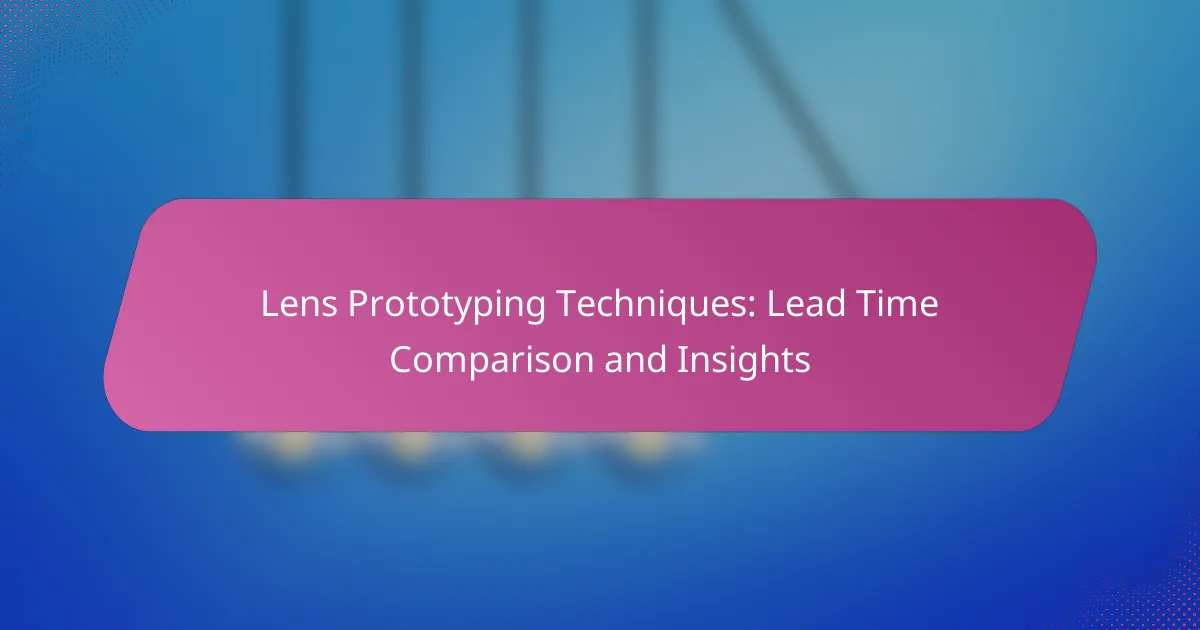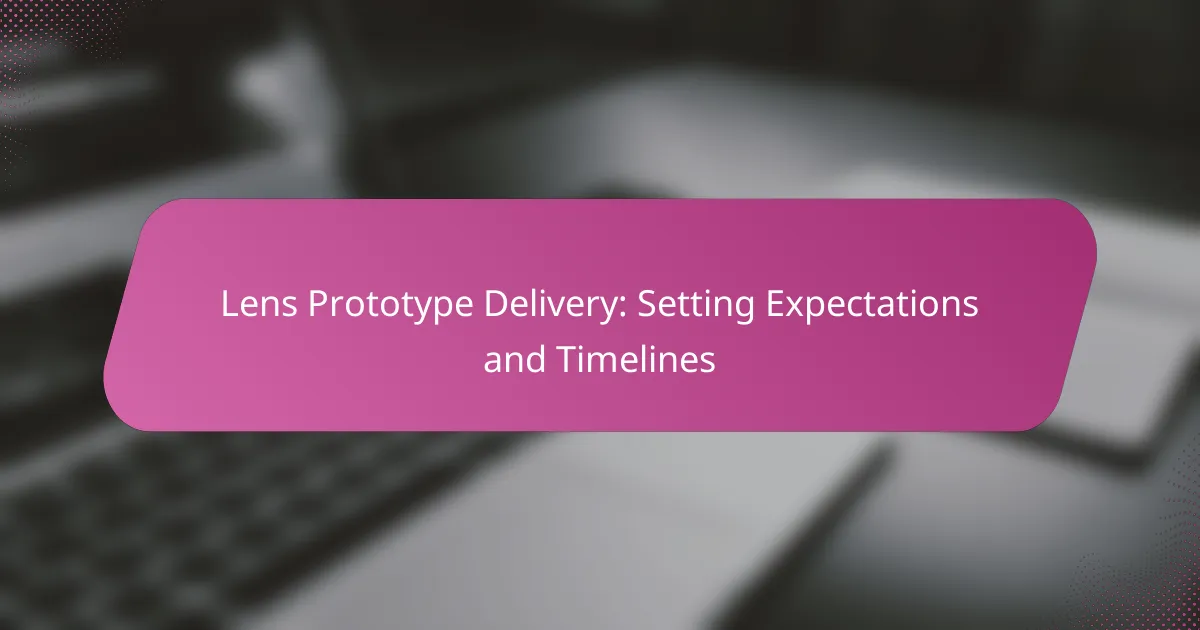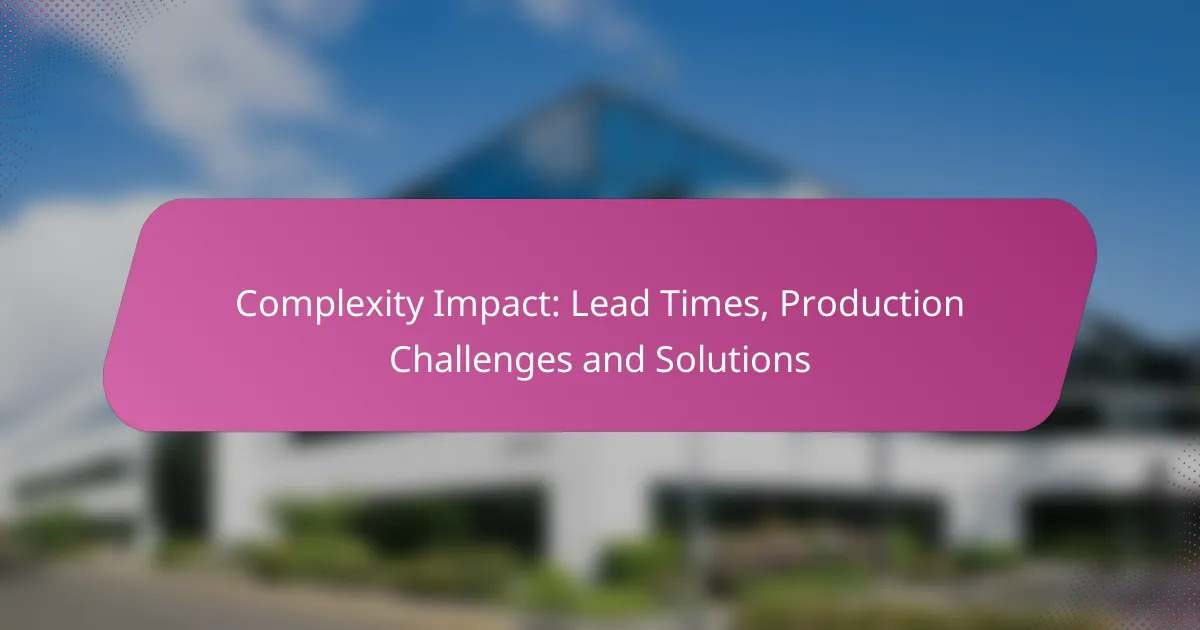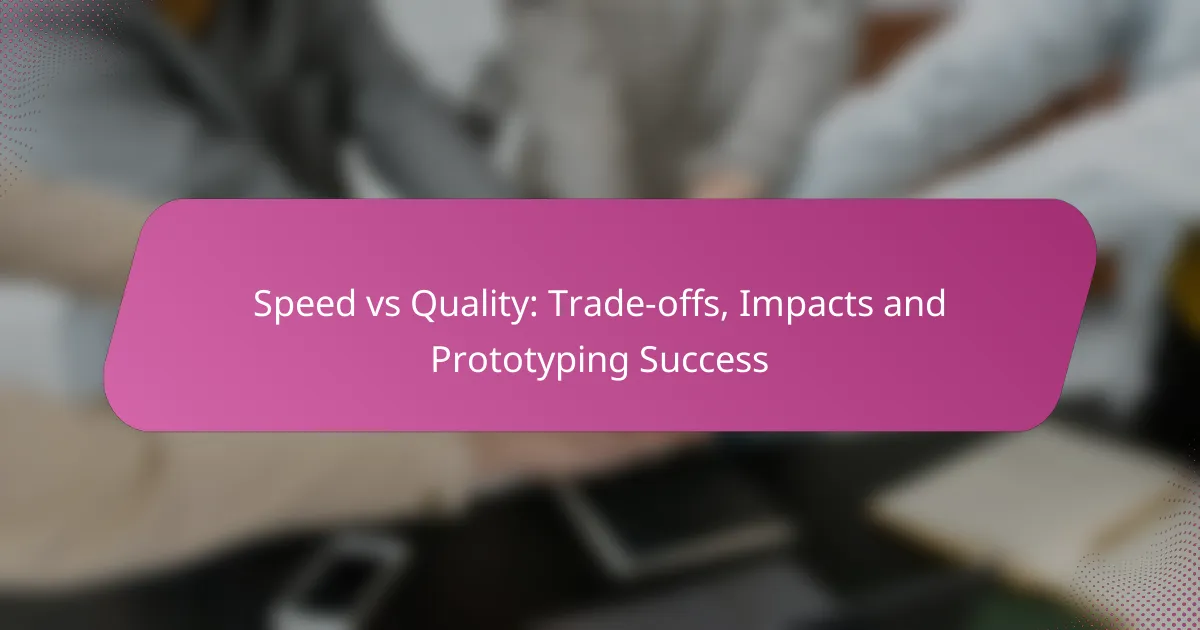Lens prototyping techniques play a crucial role in determining project timelines and costs, with methods like 3D printing, injection molding, and digital light processing offering distinct advantages. Understanding the lead times associated with each technique is essential for selecting the most suitable approach based on material selection, design complexity, and production volume. This comparison provides valuable insights for optimizing the prototyping process and achieving efficient results.
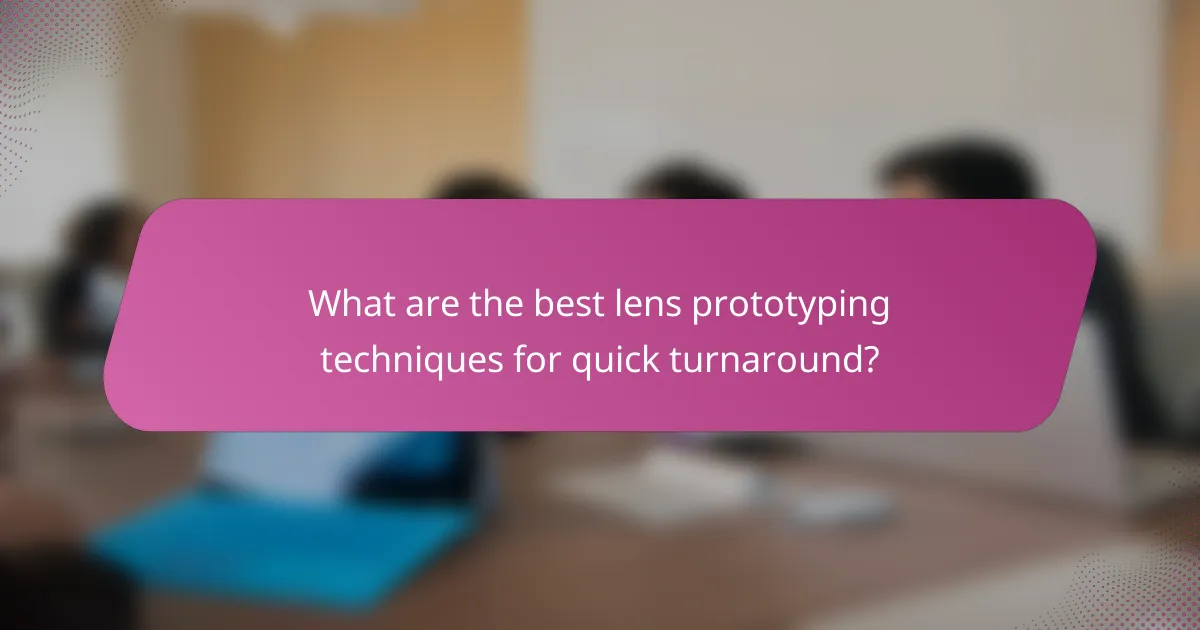
What are the best lens prototyping techniques for quick turnaround?
The best lens prototyping techniques for quick turnaround include 3D printing, injection molding, and digital light processing. Each method offers unique advantages depending on the specific requirements, such as speed, volume, and precision.
3D Printing for Rapid Prototyping
3D printing is ideal for rapid prototyping due to its ability to produce complex geometries quickly. This technique allows designers to create functional prototypes in a matter of hours, making it suitable for iterative testing and design adjustments.
Materials like resin or thermoplastics are commonly used, with costs typically ranging from a few dollars to several hundred dollars per prototype, depending on size and complexity. However, consider the limitations in durability and optical quality when using this method.
Injection Molding for High Volume
Injection molding is best for high-volume production, providing consistent quality and precision once the mold is created. While the initial setup cost for molds can be significant, the per-unit cost decreases substantially with larger production runs.
This method is suitable for producing thousands of lenses quickly, with typical lead times of a few weeks for mold creation. It is essential to ensure that the design is optimized for molding to avoid costly revisions later.
Digital Light Processing for Precision
Digital light processing (DLP) is a technique that excels in producing highly precise lens prototypes. It uses a digital light projector to cure resin layer by layer, achieving fine details and smooth finishes that are often required in optical applications.
DLP can produce prototypes in a matter of hours, making it a fast option for precision work. However, the material costs can be higher than other methods, so it’s crucial to weigh the need for precision against budget constraints when selecting this technique.
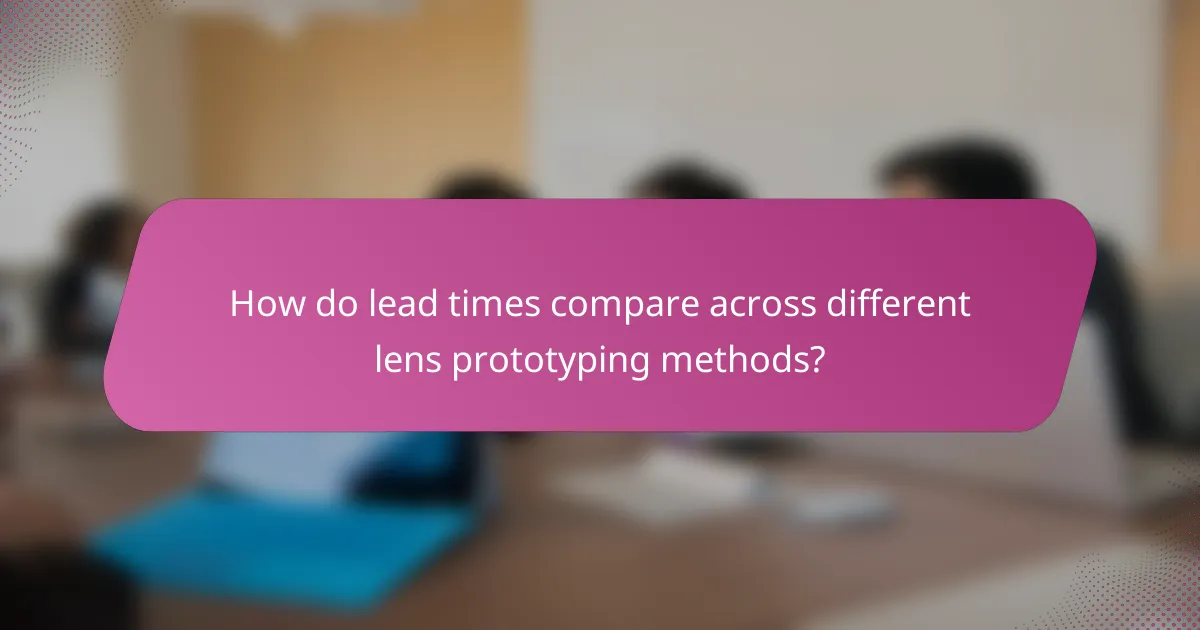
How do lead times compare across different lens prototyping methods?
Lead times for lens prototyping methods vary significantly, impacting project timelines and costs. Understanding the differences among 3D printing, injection molding, and digital light processing can help in selecting the best approach for specific needs.
3D Printing Lead Time
3D printing typically offers the shortest lead times, often ranging from a few hours to a couple of days. This method allows for rapid iterations and adjustments, making it ideal for prototyping complex designs without extensive setup time.
However, the speed can depend on the printer’s capabilities and the complexity of the lens design. For example, simpler geometries can be printed quickly, while intricate features may require more time. It’s crucial to ensure that the chosen material is compatible with the desired optical properties.
Injection Molding Lead Time
Injection molding generally has longer lead times, often taking several weeks to months. This method involves creating molds, which can be time-consuming and costly, especially for small production runs. However, once the mold is made, the production of lenses can be very fast.
Consider the upfront costs and time for mold creation when planning your project. For high-volume production, the initial investment in injection molding can be justified due to lower per-unit costs. Ensure to factor in the design phase, as any changes to the mold can significantly extend lead times.
Digital Light Processing Lead Time
Digital light processing (DLP) offers moderate lead times, typically ranging from a few days to a week. This method uses a digital light projector to cure resin, allowing for high-resolution prototypes with good optical clarity.
DLP can be a good compromise between speed and quality, making it suitable for producing detailed lens prototypes. However, like 3D printing, the lead time can vary based on the complexity of the design and the volume of parts required. It’s advisable to assess the specific requirements of your project to choose the most effective method.
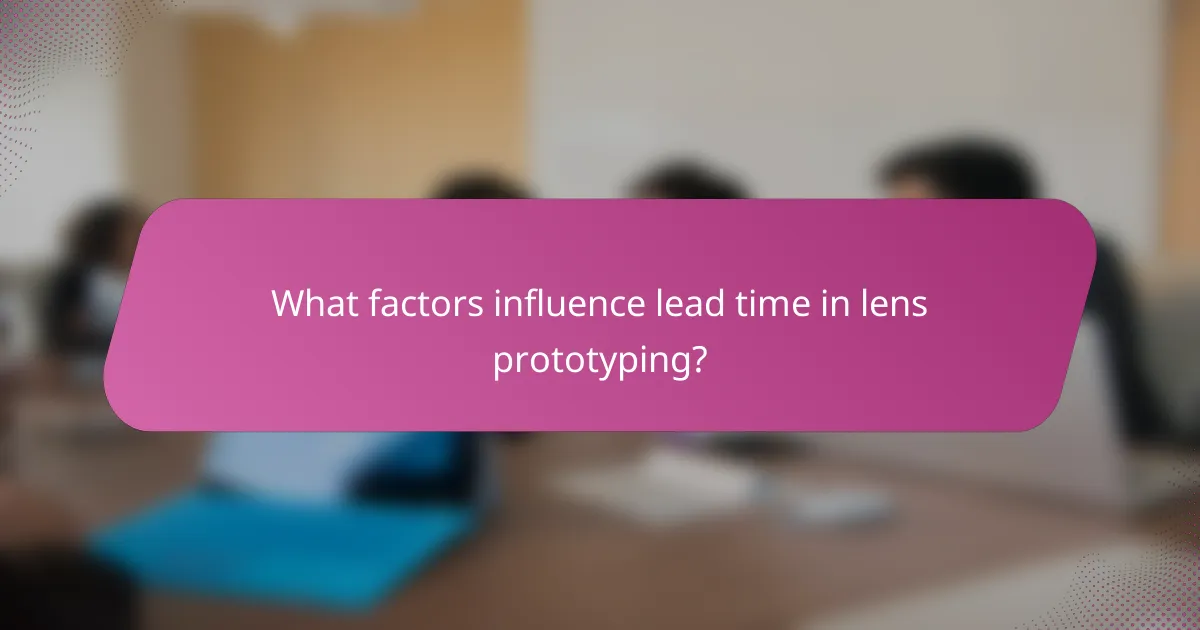
What factors influence lead time in lens prototyping?
Lead time in lens prototyping is primarily influenced by material selection, design complexity, and production volume requirements. Each of these factors can significantly affect the overall timeline from concept to finished product.
Material Selection Impact
The choice of materials directly affects the lead time in lens prototyping. Different materials have varying processing times, costs, and availability. For instance, high-performance optical plastics may require more intricate processing than standard glass, potentially extending lead times.
Additionally, sourcing specific materials can introduce delays. If a particular polymer is not readily available, it may take additional time to procure or switch to an alternative, which can impact the overall schedule.
Complexity of Design
Design complexity is a critical factor that can lengthen lead times. More intricate designs often require advanced manufacturing techniques, which can take longer to set up and execute. For example, a lens with multiple aspheric surfaces may necessitate specialized tooling and longer machining times compared to simpler designs.
Moreover, complex designs may require additional iterations and testing to ensure optical performance, further extending the timeline. It is essential to balance design ambition with manufacturability to avoid unnecessary delays.
Production Volume Requirements
Production volume significantly influences lead time in lens prototyping. Low-volume runs may have longer lead times due to the need for custom setups and tooling, while high-volume production can benefit from economies of scale, reducing per-unit processing time.
When planning for production, consider the trade-off between speed and cost. For instance, opting for rapid prototyping methods might shorten lead times but could increase costs. Understanding the desired volume can help in selecting the most efficient production method.

What are the cost implications of different lens prototyping techniques?
The cost implications of various lens prototyping techniques vary significantly based on materials, complexity, and production scale. Understanding these costs can help in selecting the most suitable method for specific project needs.
Cost of 3D Printing
3D printing is often considered a cost-effective option for low-volume lens prototyping. The initial investment in a 3D printer can range from a few hundred to several thousand dollars, depending on the technology and capabilities. Material costs typically range from $20 to $100 per kilogram, depending on the type of resin or filament used.
While 3D printing allows for rapid iterations and design flexibility, it may not be suitable for high-volume production due to slower build times and potential quality inconsistencies. It’s best used for testing concepts or creating custom designs in small batches.
Cost of Injection Molding
Injection molding is generally more expensive upfront due to the costs associated with creating molds, which can range from several thousand to tens of thousands of dollars. However, once the molds are made, the cost per unit decreases significantly, making it ideal for large production runs.
For lens prototypes, the material costs can vary widely based on the type of plastic used, typically ranging from $2 to $10 per unit for larger quantities. This method is efficient for producing high-quality, consistent lenses, but the lead time for mold creation can be lengthy.
Cost of Digital Light Processing
Digital Light Processing (DLP) is a relatively newer technique that combines aspects of 3D printing and traditional molding. The initial setup costs can be moderate, often between $5,000 and $15,000 for a DLP printer. Material costs are similar to those of 3D printing, typically ranging from $50 to $200 per liter of resin.
DLP is advantageous for producing high-resolution prototypes quickly, making it suitable for applications requiring detailed lens designs. However, like 3D printing, it may not be the best choice for high-volume production due to slower output rates compared to injection molding.
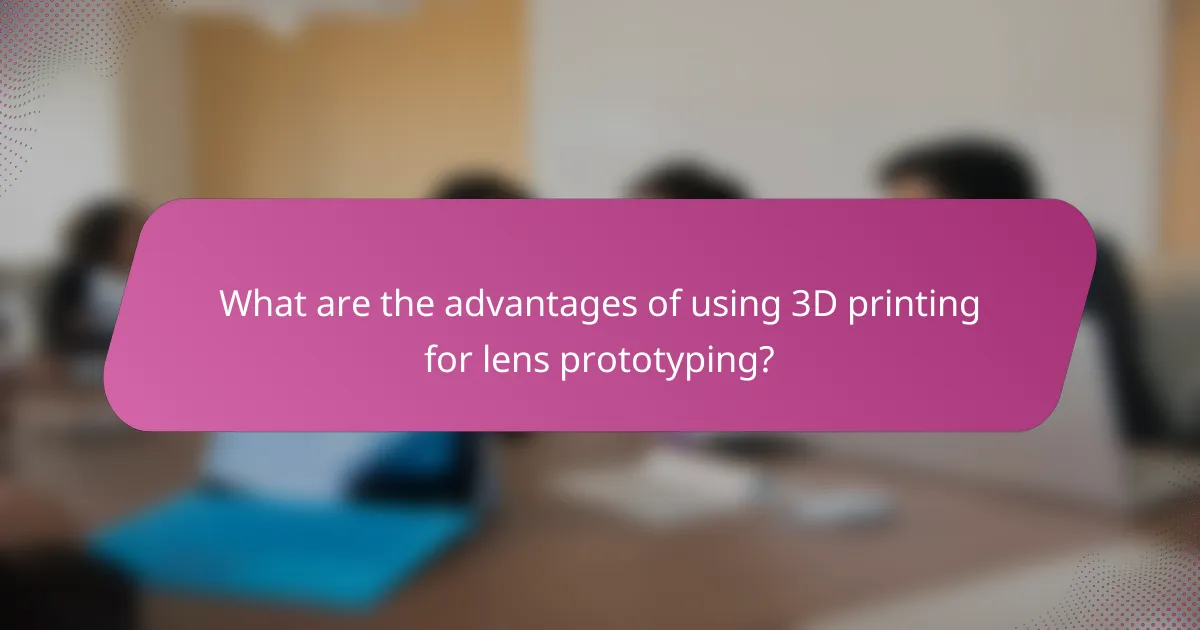
What are the advantages of using 3D printing for lens prototyping?
3D printing offers significant advantages for lens prototyping, including enhanced design flexibility, reduced material waste, and quicker iteration cycles. These benefits streamline the prototyping process, allowing for faster development and refinement of lens designs.
Flexibility in Design Changes
3D printing allows designers to easily modify lens geometries and features without the need for extensive retooling. This flexibility means that adjustments can be made quickly, enabling rapid testing of different design concepts.
For instance, if a specific curvature or thickness needs alteration, it can be done in a matter of hours rather than weeks, which is typical with traditional manufacturing methods. This adaptability is crucial in a fast-paced development environment.
Reduced Material Waste
Using 3D printing for lens prototyping significantly minimizes material waste compared to traditional subtractive manufacturing techniques. Since 3D printing builds objects layer by layer, only the necessary amount of material is used, leading to more efficient resource utilization.
For example, in traditional lens production, excess material is often cut away, resulting in substantial waste. With 3D printing, the waste can be reduced to a fraction of what it would be, making it a more sustainable option.
Faster Iteration Cycles
3D printing accelerates the iteration cycles of lens prototypes, allowing for rapid testing and feedback. Designers can produce multiple iterations in a short timeframe, enabling them to evaluate performance and make improvements quickly.
Typically, a new prototype can be printed in a single day, while traditional methods may require several weeks for tooling and setup. This speed not only shortens the development timeline but also enhances the overall innovation process.
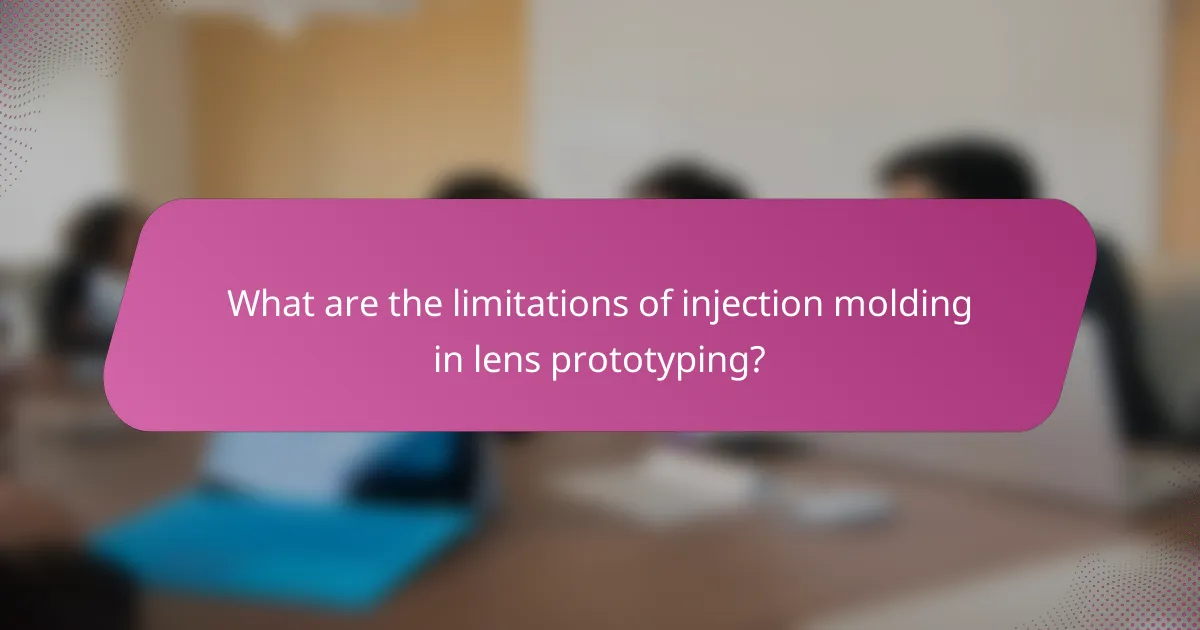
What are the limitations of injection molding in lens prototyping?
Injection molding in lens prototyping has several limitations, primarily related to cost, time, and design flexibility. While it is efficient for mass production, the initial investment and setup can be significant, making it less suitable for rapid prototyping or small batches.
High Initial Setup Costs
The initial setup costs for injection molding can be quite high, often reaching thousands of dollars. This includes expenses for mold creation, which can take considerable time and resources to design and manufacture.
For small-scale projects or prototypes, these costs can be prohibitive. Companies may find that alternative methods, such as 3D printing, offer a more economical solution for producing initial designs or testing concepts.
When considering injection molding, it is essential to evaluate the production volume needed. If the expected output is low, the high upfront costs may not justify the investment compared to other prototyping techniques.
